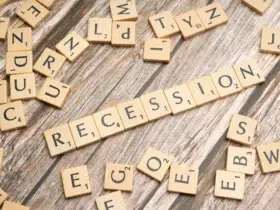Quivering changes from Wall Street to Main Street are reordering how we work, invest, and innovate. But behind the headlines and hype, what is really happening in the US economy?
If you had a crystal ball that showed you what’s in store for finance, jobs, and technology, what opportunities would you capture? What dangers would you evade? Cut through the noise to find key takeaways from the trends moving and shaking America’s economic engine. For investors, job seekers, and business owners alike, these are the trends that make all the difference between pit stops and smooth sailing down the road ahead.
Buckle up for a wild ride as we explore the current state of the US economy, peek into the crystal ball of the financial market, unravel job market dynamics, and unveil technological marvels re-imagining industries. Get ready to attain a competitive edge with information that could shape your financial future.
In fact, discussing the current state of the US economy may be about considering the contribution of many aspects with regard to its health and the direction it is heading. A bird’s-eye view of major indications, policies, and international relations will shed valuable light on the nation’s economy.
Trends and Projections of GDP Growth
GDP growth is one of the most basic measures showing the performance of an economy. Over the last couple of years, growth rates have oscillated due to various factors like world events, domestic policies, and market conditions.
Inflation Rates and Federal Reserve Policies
Inflation has been one of the major threats to the US economy, forcing the Federal Reserve to take aggressive actions.
Current Inflationary Trends
As of April 2023, the Consumer Price Index rose 4.9% over the past 12 months, down from a 9.1% spike in June 2022. While this is progress in keeping inflation under control, it remains well above the Federal Reserve’s long-run target of 2%.
Federal Reserve’s Response
The Federal Reserve has tackled inflation with a series of interest rate hikes, starting in March 2022. By May 2023, the Federal Funds Rate was raised to a target range of 5% to 5.25%, aimed at slowing the economy and reining in inflation.
Balance of Trade and International Economic Relations
The US trade balance significantly influences the country’s overall economic situation and its international relationships.
Current Account Balance
In March 2023, the US trade deficit declined to $64.2 billion, driven by:
- Increased exportation of goods and services
- Reduced importation, particularly of consumer goods
Key International Economic Relations
The US maintains vital economic relationships with the following regions:
- China: Still a major trading partner despite tensions
- European Union: A crucial partner in trade and investment
- Canada and Mexico: Neighbors in the USMCA Agreement
- Emerging Economies: Growing importance for supply chains and export markets
Challenges in these relationships include ongoing trade negotiations, efforts to improve supply chain resilience, and the impacts of geopolitical tensions.
Important Economic Indicators to Consider
To fully understand the health of the US economy, we must look beyond GDP and inflation. Here are other crucial indicators:
Labor Market Indicators
- Unemployment Rate: 3.4% (April 2023) – close to historic lows
- Labor Force Participation Rate: 62.6% (April 2023), still below pre-pandemic levels
- JOLTS Report: Tracks unoccupied job vacancies and labor turnover
Consumer Confidence and Spending
- Consumer Confidence Index: Measures public sentiment about the economy
- Retail Sales: Reflects consumer expenditure performance
- Personal Consumption Expenditures (PCE): The Fed’s preferred inflation measure
Housing Market Indicators
- New Home Sales vs. Existing Home Sales
- Housing Starts and Building Permits
- Case-Shiller Home Price Index
Manufacturing and Industrial Production
- ISM Manufacturing Index: From the Institute for Supply Management
- Industrial Production Index
- Full Utilization Level
Financial Markets Indicators
- S&P 500 and other major stock indices
- 10-year Treasury yields and other yields
- The inverted yield curve: Often seen as a recession warning
Challenges and Opportunities Ahead
These key indicators enable policymakers, business leaders, and individuals to make informed decisions about the current state of the US economy. Despite resilience in sectors like the labor market, inflation concerns and potential slowdowns persist.
Moving forward, the interaction between fiscal policy, monetary policy, international economic conditions, and technological innovation will further define the course of the economy. Given the current trends, continuing the financial market outlook requires consideration of these broader economic factors.






